In crowded clubs, safety is paramount, and implementing effective strategies can greatly enhance the well-being of patrons. By staying aware of their surroundings, maintaining hydration, and knowing the locations of safe zones, individuals can significantly reduce risks. Additionally, club owners play a crucial role by ensuring robust safety measures, such as regular drills and a visible security presence, to create a secure environment for everyone.
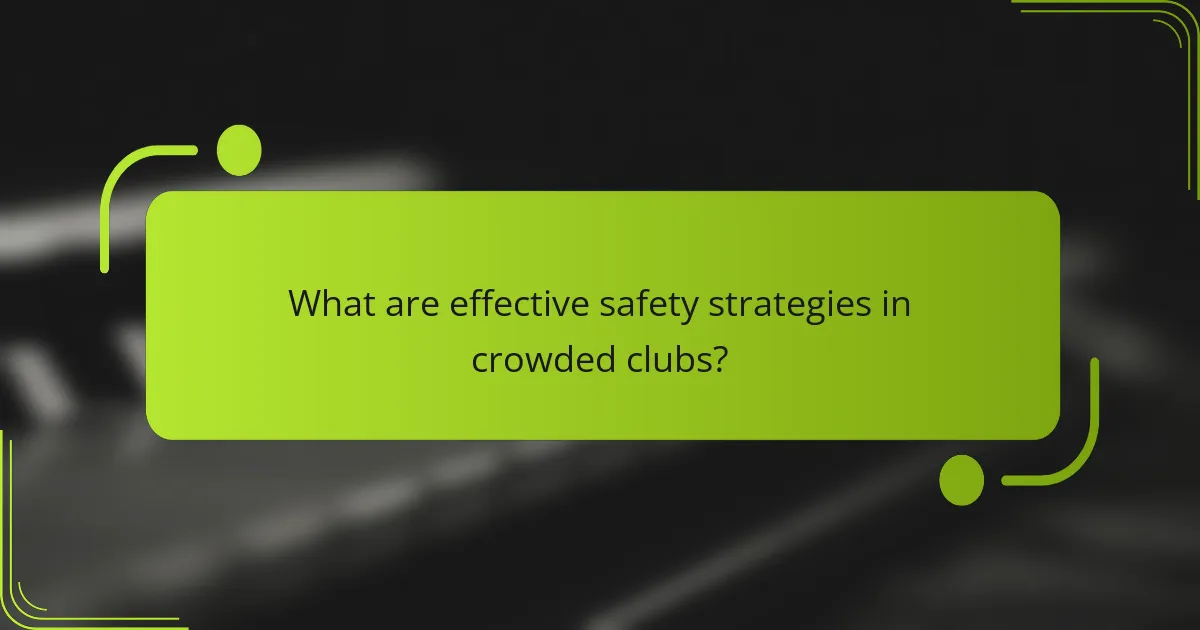
What are effective safety strategies in crowded clubs?
Effective safety strategies in crowded clubs focus on awareness, communication, and preparedness. By understanding the environment and employing specific techniques, patrons can enhance their safety and that of others around them.
Emergency exit awareness
Knowing the location of emergency exits is crucial in crowded clubs. Familiarize yourself with the layout upon entry, noting at least two exits that are easily accessible. This knowledge can significantly reduce evacuation time in an emergency.
Check for illuminated exit signs and ensure they are unobstructed. In some venues, exits may be hidden behind curtains or furniture, so be vigilant and plan your escape route ahead of time.
Personal space management
Maintaining personal space is vital in crowded environments to prevent panic and ensure comfort. Stand at least an arm’s length away from others when possible, which helps reduce the risk of feeling overwhelmed.
Be aware of your surroundings and adjust your position if you feel crowded. If you notice a group forming around you, consider moving to a less congested area to maintain your comfort and safety.
Group coordination techniques
When attending a club with friends, establish a communication plan to stay connected. Agree on a meeting point in case anyone gets separated, and use group messaging apps to coordinate movements throughout the night.
Assign roles within the group, such as a designated lookout for exits or a point person for communication. This coordination can help ensure that everyone remains safe and accounted for during the event.
Use of safety apps
Safety apps can enhance security in crowded clubs by providing real-time information and communication tools. Consider downloading apps that allow you to share your location with friends or alert authorities in case of an emergency.
Some apps also offer features like emergency alerts or direct connections to local law enforcement. Research and choose apps that are well-reviewed and suited to your needs before heading out.
Staff training on crowd control
Effective crowd control relies on well-trained staff who can manage large groups safely. Clubs should invest in training programs that teach employees how to identify potential hazards and respond appropriately to emergencies.
Staff should be familiar with evacuation procedures and how to assist patrons in distress. Regular drills and training sessions can help ensure that all employees are prepared to handle crowded situations effectively.
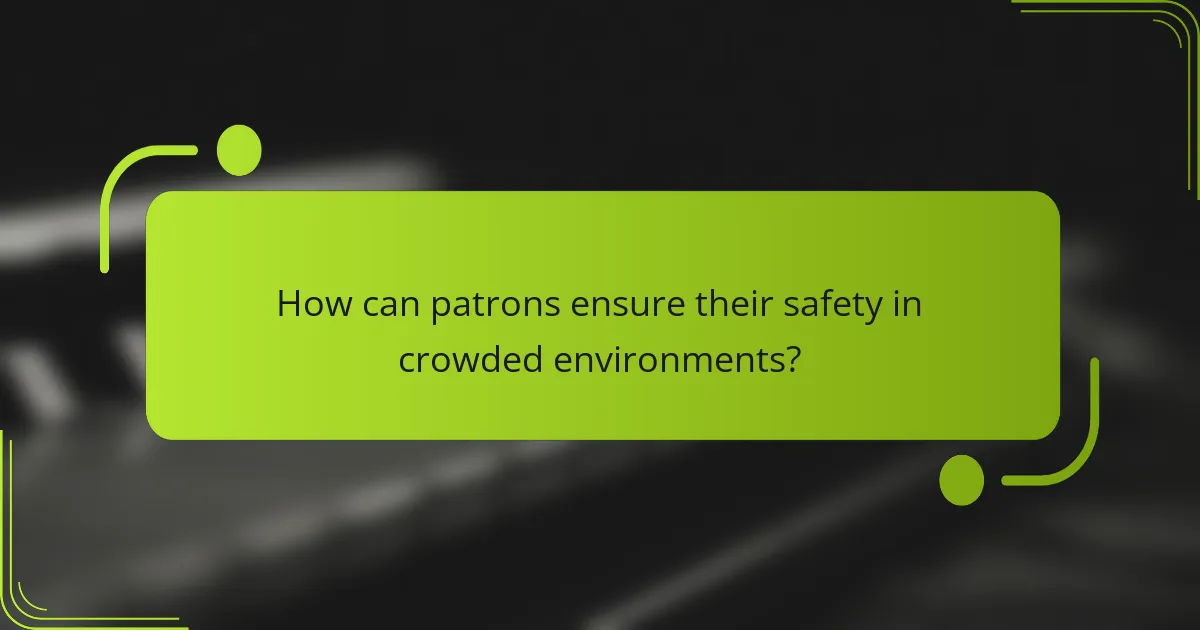
How can patrons ensure their safety in crowded environments?
Patrons can enhance their safety in crowded environments by staying aware of their surroundings, maintaining hydration, and knowing where to find safe zones. Implementing these strategies can significantly reduce risks associated with overcrowding.
Staying hydrated and alert
Staying hydrated is crucial in crowded clubs, as dehydration can lead to dizziness and impaired judgment. Drink water regularly, especially if alcohol is consumed, to maintain both physical and mental alertness.
Set a personal limit on alcohol intake and alternate drinks with water. This practice helps keep you aware of your surroundings and reduces the likelihood of accidents or confrontations.
Identifying safe zones
Safe zones are designated areas within a club where patrons can retreat in case of emergencies or overwhelming situations. Familiarize yourself with these locations upon entering, which may include exits, security stations, or quieter sections of the venue.
In crowded environments, knowing where to go can save valuable time during an emergency. Look for signs or ask staff about the nearest safe zones to ensure you can navigate quickly if needed.
Using buddy systems
Utilizing a buddy system is an effective way to enhance safety in crowded clubs. Pair up with a friend and agree to keep an eye on each other throughout the night, ensuring that neither of you gets lost or overwhelmed.
Establish clear communication signals or check-in times to stay connected. If one of you feels uncomfortable or needs assistance, the other can provide immediate support, making the experience safer and more enjoyable.
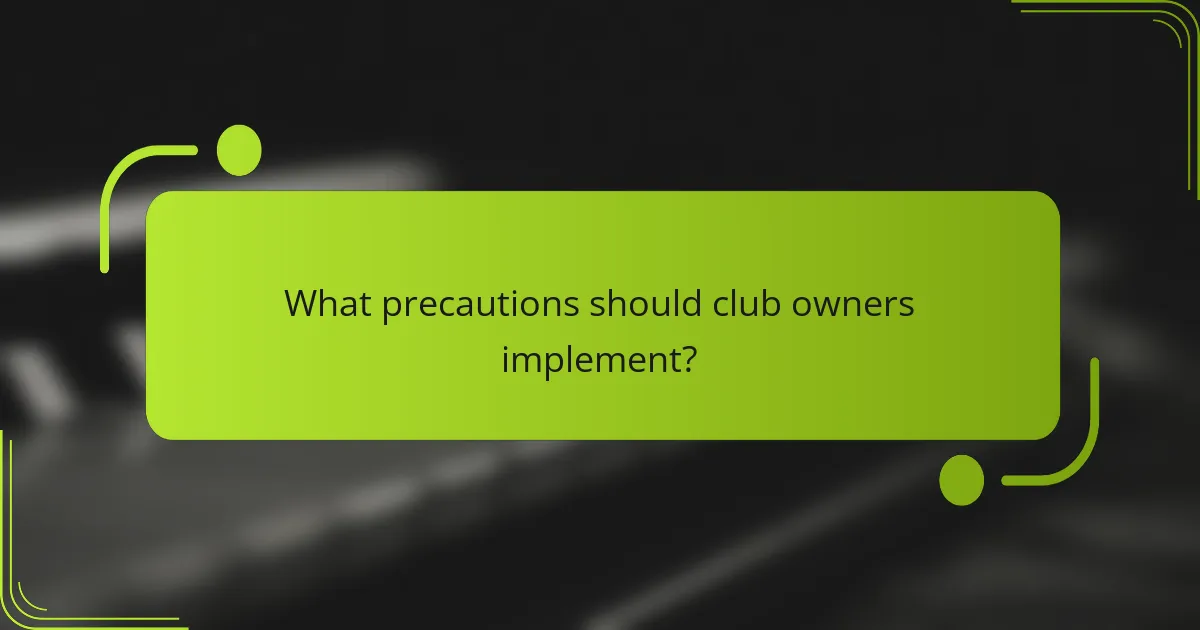
What precautions should club owners implement?
Club owners should implement a range of safety precautions to ensure the well-being of patrons and staff. Key strategies include regular safety drills, a strong presence of security personnel, and upgraded surveillance systems to monitor activities effectively.
Regular safety drills
Conducting regular safety drills is essential for preparing staff and patrons for emergency situations. These drills should simulate various scenarios, such as fire evacuations or active shooter situations, allowing everyone to practice their roles and responses.
Club owners should schedule these drills at least quarterly and ensure that all employees participate. This not only enhances preparedness but also fosters a culture of safety within the establishment.
Security personnel presence
A visible presence of security personnel is crucial for deterring potential incidents and ensuring a quick response to emergencies. Clubs should employ trained security staff who can manage crowd control and identify suspicious behavior.
It is advisable to have at least one security guard for every 100 patrons, adjusting as necessary based on the club’s size and event type. This approach helps maintain a safe environment while allowing patrons to feel secure.
Surveillance system upgrades
Upgrading surveillance systems can significantly enhance a club’s safety measures. High-definition cameras should be installed at key locations, such as entrances, exits, and crowded areas, to monitor activities effectively.
Additionally, integrating real-time monitoring capabilities can enable security personnel to respond swiftly to incidents. Club owners should consider investing in systems that offer remote access, allowing for constant oversight even when management is not on-site.
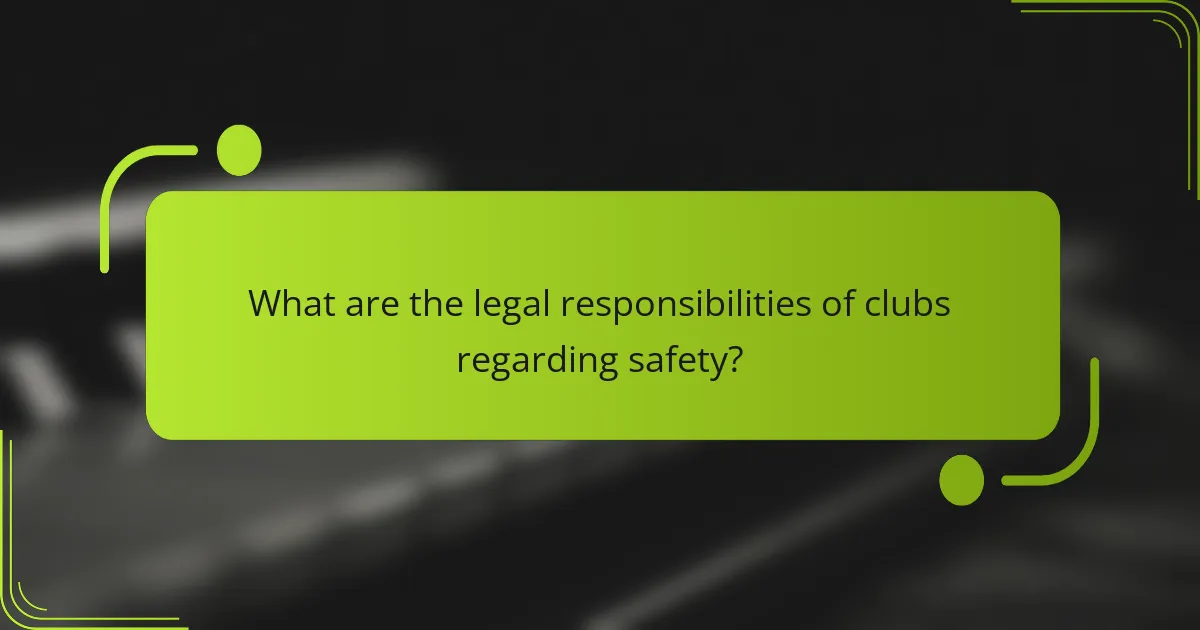
What are the legal responsibilities of clubs regarding safety?
Clubs have a legal obligation to ensure the safety of their patrons, which includes maintaining a secure environment and adhering to various regulations. This responsibility encompasses compliance with fire safety standards, insurance requirements, and overall risk management to prevent accidents and injuries.
Compliance with fire safety regulations
Clubs must comply with local fire safety regulations, which typically include having clearly marked exits, functioning fire alarms, and accessible fire extinguishers. Regular inspections are essential to ensure that all safety equipment is operational and that the venue adheres to capacity limits to prevent overcrowding.
Additionally, staff should be trained in emergency evacuation procedures and fire safety protocols. This training helps ensure a swift and organized response in case of an emergency, minimizing risks to patrons.
Insurance requirements
Clubs are generally required to carry liability insurance to protect against potential claims arising from accidents or injuries on their premises. This insurance often covers incidents related to slips, falls, and other safety violations, providing financial protection for both the club and its patrons.
Depending on the jurisdiction, clubs may also need to meet specific insurance minimums or types, such as workers’ compensation insurance for employees. It is crucial for club owners to consult with insurance professionals to ensure they meet all legal requirements and adequately protect their business.
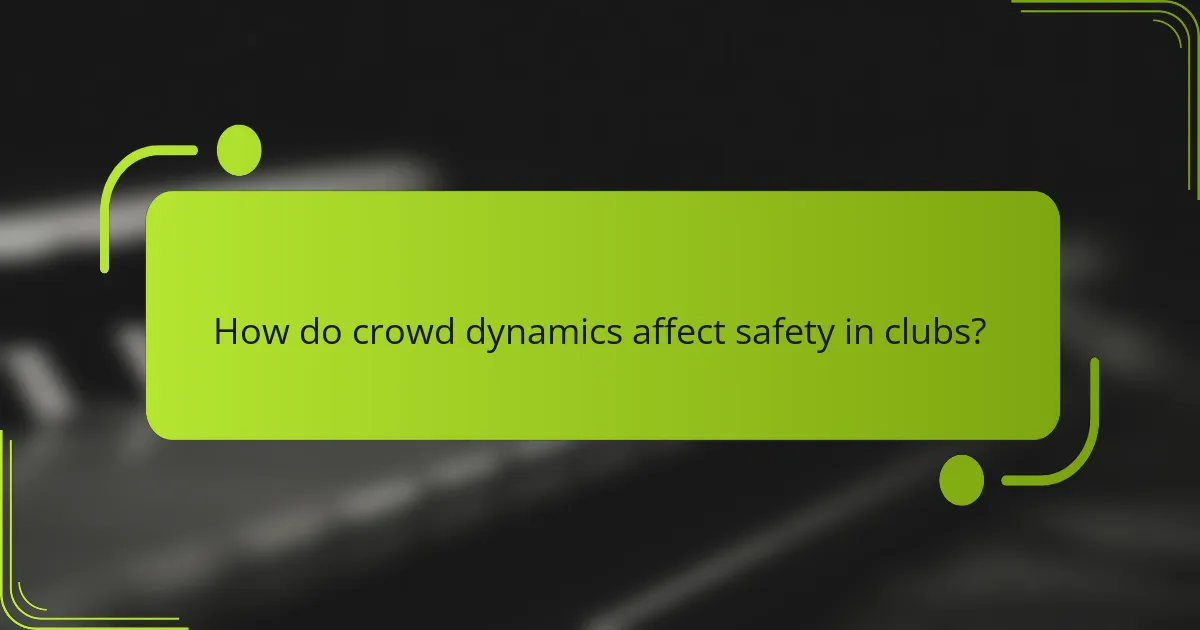
How do crowd dynamics affect safety in clubs?
Crowd dynamics significantly influence safety in clubs by determining how individuals interact and move within a space. High-density crowds can lead to increased risks of accidents, panic, and difficulty in evacuation, making it essential to understand these dynamics for effective safety management.
Understanding crowd behavior
Crowd behavior refers to the collective actions and reactions of individuals in a group setting. In clubs, factors such as music volume, lighting, and layout can impact how people behave, often leading to heightened emotions and impulsive actions. Understanding these behaviors helps in anticipating potential safety issues.
For instance, when a crowd becomes too dense, individuals may feel trapped, leading to anxiety and aggressive behavior. Recognizing signs of distress early can help staff intervene before situations escalate. Clubs should monitor crowd density and adjust music or lighting to maintain a comfortable atmosphere.
Effective crowd management strategies include training staff to recognize crowd behavior patterns and establishing clear communication channels. Regular drills can prepare staff for emergencies, ensuring they can guide patrons safely in case of an incident.


